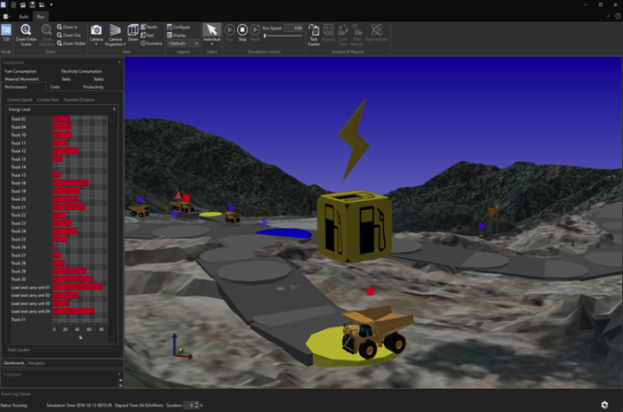RPMGlobal’s software & technology solutions span the whole mining industry from exploration to closure. But two areas – ESG and zero emissions mining fleets – are very topical at the moment and very much in its wheelhouse. IM Editorial Director, Paul Moore, had the chance to talk in-depth with the company at IMARC 2022.
Starting off with environmental, social and governance (ESG), IM talked to the Head of ESG at RPMGlobal, Ngaire Tranter, who joined the group in June 2021 via the acquisition of Nitro Solutions in Brisbane. Nitro was a very successful consultancy providing the mining industry with quality focused environmental, social and governance (ESG) services in environmental approvals, impact assessments, regulatory advice, environmental audits, compliance reporting (due diligence) and environmental economics, policy & legislation advice.
Ngaire Tranter is the RPMGlobal Head of ESG
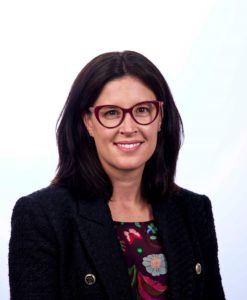
So, what does ESG mean in a real operating mine reporting sense? Tranter told IM: “The broad push of ESG means it is now coming into everyone’s consciousness. Really first and foremost it is about transparency and communication about what’s going on. If you look at software under that lens, you have a lot of sustainability-related data you need to pick up from your mining operation and communicate out how you are performing on those issues. That allows you to show you have good governance principles as a company and meet listing requirements if you are a public company. You need to have and show confidence in what you are reporting, which comes all the way down to how you are capturing data and how is everyone in your organisation looking at it.”
David Batkin is RPMGlobal EGM Product Strategy – he commented: “We really wanted to grow our ESG presence, so we acquired Nitro Solutions in Brisbane and then shortly after that Blueprint Environmental Strategies in Perth. We now have one of the largest ESG teams in mining. We have always done ESG work but these acquisitions were a major boost and have strengthened our offering, particularly on the software side.” Batkin in his role is responsible for general product direction stated: “We have quite a broad software product range – across the company it has grown in the last decade from four products to more than forty products. These products come under eight suites – the most recent of which being Sustainability to support our ESG team.”
David Batkin, RPMGlobal EGM Product Strategy
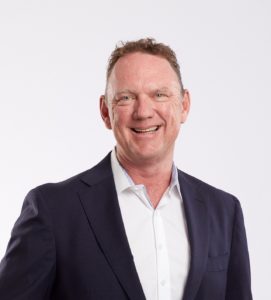
Tranter argues that every single person in their role whether it is related to maintenance, mine planning or scheduling – all need to have access to ESG information and contribute to it, therefore increasing its accuracy and helping answer the big question of what we are doing today and what do we need to be doing going forward?
Batkin gave a good example: “Look at planning and scheduling – disturbance reporting is absolutely crucial today. You now need to give very detailed reports about any virgin ground that you may have disturbed or if you are dumping waste rock on virgin ground. You need to plan and then track all material movements to make sure you are fully compliant with regulatory and even investor requirements.”
So what did Nitro add to RPMGlobal and what does the combination offer? Tranter says: “At Nitro we specialised in preparing EIAs and supporting both greenfield and expanding mines through that due diligence process to help them get financing and the necessary licences and permits to proceed to development. But of course, once those are in place all of that EIA paperwork becomes legally binding right through to what was stated on closure and rehabilitation. You have to get that information out of what can be a 20,000 page plus document and into the hands of shift planners, operators, managers – in fact everyone needs to be cognisant of the company’s obligations.”
Batkin added: “It was a really good fit because we already had one of the largest mining advisory businesses and while we did do some of this specific ESG work, the small team lacked the necessary critical mass. Nitro and Blueprint gave us that along with a wealth of ESG knowledge and experience. We also then started looking at how we could bring our software solutions to bear to support those processes. Most of the software that was being used was related just to document compiling and management – for example, pulling out the different EIA commitments and keeping track of them. When Ngaire and others came on board they found that there were existing ESG capabilities across most of our forty or so software packages, for example our planning and scheduling software already allowed for disturbance reporting; and our simulation software is capable of simulating the effects of introducing battery electric vehicles or hybrid hydrogen-battery fleet to an operation, thereby supporting decarbonisation studies.”
Simulating next generation green mining fleets
Batkin said that RPMGlobal is still probably more focused on the ‘Environmental’ part of ESG, as there is a lot of that which is very mining specific, given the Social and Government side already has their own cross-industry software solutions. “Looking at simulation again, the original TALPAC software is one of our four foundation products with the first version dating back nearly forty years. TALPAC (an acronym for truck and loader productivity and costs) – was a very early simulation software that essentially calculated travel time for specific combinations of equipment. Since then, we have developed it into a full discrete event simulation product – HAULSIM, which is today used by all the major mining truck OEMs, as well as their dealers and the miners. It can simulate all the loading and haulage in the mine. We have now added battery electric, hydrogen and hybrid vehicles to that, where through modelling, you can look at how an all battery fleet would look compared to a mixed battery and diesel fleet or how trolley-assist would complement a battery fleet; and work out which combination produces the best productivity outcome with the technology being offered today.”
A busy RPMGlobal stand at IMARC 2022 in Sydney
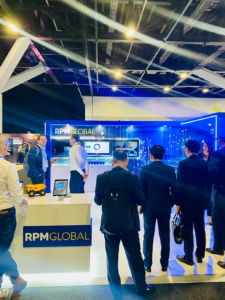
He adds: “Zero emissions fleets will represent a huge capital investment for the mining companies. When you consider hydrogen and the added infrastructure it involves, this brings a whole new dimension to that. One thing we have realised is that when you are building diesel trucks, it’s all about the size of the truck – up to a certain size they are mechanical drive but for most large mining class trucks they are diesel with electric drive. With electric fleets, there are multiple ways to do it, including battery swap, trolley assist, fixed charging, downhill regeneration and many more. You need to be able to model all these scenarios to figure out which combination is best for your mine. Another issue is that mines change over time – haul roads get longer, new pushbacks are made – so you need to be able to model how the potential changes in electric truck infrastructure will look from a cost point of view. Likewise, on the battery side, you need to understand what your net energy usage is going to be – as there is no point in buying a truck that is not going to meet your productivity needs, plus your charging capacity, and power generation capacity must be able to satisfy the fleet and plant needs.”
So how does RPMGlobal enable modelling of this when there are a lot of parameters involved that are not yet known or known to any significant level of detail? “You are right – we are simulating trucks that haven’t even been built yet in some cases. That said, once you understand the performance of the electric drives, which we already do as most ultra-class fleets are diesel-electric already – then it is just about battery capacity, understanding what your net usage is, and how much recharge you get on the way back into the pit.”
So, who is using this zero emissions HAULSIM software? Interestingly, it is utilised extensively on the OEM and mine operator side. The major truck OEMs all use it as part of their simulation solutions. RPMGlobal initially adds equipment models based on any published specifications, with the OEMs obviously adding extra proprietary levels of complexity on their equipment, prototypes and future fleets. “They are using it to help customers make key decisions about which way they are going to go – battery, hybrid, hydrogen or a combination. Without really good simulation tools it is a very hard problem for the mine operators to solve.” RPMGlobal’s close relationship with the OEMs dates back to TALPAC as many of them started out using that years ago to simulate their equipment for prospective customers.
RPMGlobal has also worked closely with mining companies to model the best position for new trolley lines for maximum productivity gain. Utilising simulation supports customers future planning as the trolley line extends and potentially as they consider a new battery trolley and the subsequent effects on their electric infrastructure. Another global miner is using HAULSIM to help model how its operations will look as it phases in hybrid hydrogen-battery trucks in the coming years.
HAULSIM is also used to model autonomous truck fleets, and of course the new generation of zero emissions trucks will be autonomous as well. Simulation is also ideal for understanding better the potential of using larger fleets of autonomous and smaller capacity electric trucks – often referred to as ‘swarms.’ Several large miners have publicly stated that this something they are looking at.
RPMGlobal’s EmissionsManager is a Software as a Service (SaaS) based solution for collecting, calculating, monitoring and reporting on emissions data
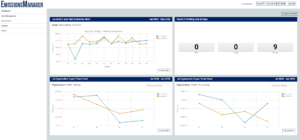
Tranter circled back to the fact that all this work on zero emissions trucks remains part of a broader decarbonisation and ESG strategy. “Mining groups are still trying to understand what all of this means. Just before IMARC we launched our Carbon Literacy for Miners training program – a world first and accredited Carbon Literacy course specifically for the mining and resources industry. The course allows individuals to learn the key skills to actively contribute to emissions reduction and resilience development, regardless of their role. At a basic level it helps them understand how emissions are calculated and why it matters. Everyone in an organisation should be able to comprehend what Scope (1, 2 or 3) target commitments are and the science behind it.” Batkin adds: “It’s one thing to convert your haul truck fleet and put the necessary infrastructure in – but it is also about where the power comes from – there are many parts of the world where you can’t even run the plant off the grid, so you have to generate your own power.”











